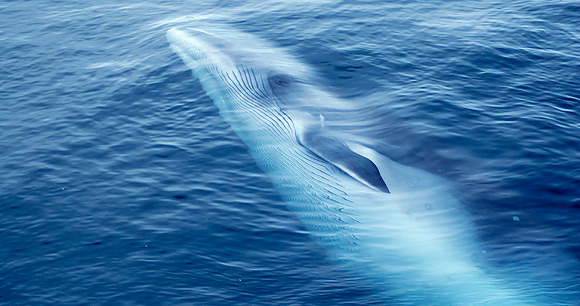
Update: No commercial whaling for fin whales—a threatened species—occurred in Iceland in 2019, 2020, and 2021. In 2022, the Hvalur whaling company resumed activities, and 148 fin whales were killed. In August 2022, Iceland‘s minister of food, agriculture and fisheries, Svandís Svavarsdóttir, issued a new whaling welfare regulation requiring the Food and Veterinary Authority (MAST) to carry out regular inspections of whaling hunts. The inspections’ purpose was to promote improved animal welfare during whaling. The results of these inspections were staggering. Of the 58 whales whose deaths were analyzed, 41 percent did not die instantly, and the median time to death for those whales was 11.5 minutes. Two whales took more than an hour to die.
In response to these horrific results, MAST tasked an Expert Advisory Board on Animal Welfare with evaluating whether fin whaling can ever comply with Iceland’s Animal Welfare Act. The opinion of the board was submitted to the Ministry of Food, Agriculture and Fisheries on June 19, 2023, and its conclusion was that the methods employed in hunting large whales do not meet the law’s requirements. On June 20, Minister Svavarsdóttir announced that she was suspending the hunting of fin whale until August 31, 2023, and stated, “This activity cannot continue in the future if the authorities and the license holders can not ensure the fulfillment of the welfare requirements.”
Hvalur’s whaling permit will expire at the end of 2023, and it is hoped that it will not be renewed.
In 1982, the International Whaling Commission (IWC) imposed a moratorium on commercial whaling, effective from 1986. Iceland, a major whaling nation since the late 19th century and a founding member of the IWC, did not formally object to the 1982 decision and was thus bound by the ban; however, it continued to whale after the moratorium took effect under the “special permit” provision in Article VIII of the International Convention for the Regulation of Whaling (ICRW) that allows whaling on otherwise protected species for “scientific research.” Iceland killed an average of 90 whales per year until 1990, exporting most of the products to Japan. Finally, in 1992, it withdrew from the IWC.
In 2002, Iceland rejoined the IWC in a controversial decision (it cast the decisive vote on its own membership) and lodged a reservation to the moratorium—a move disputed by many countries as being contrary to international law. Argentina, Australia, Brazil, Chile, Finland, France, Germany, Monaco, the Netherlands, Peru, Portugal, San Marino, Spain, Sweden, the United Kingdom, and the United States all formally objected to Iceland’s reservation; Italy, Mexico, and New Zealand also objected to the reservation and further noted that they do not consider the ICRW as being in force between their countries and Iceland.
Iceland resumed special permit whaling in 2003, killing 200 minke whales over the next five years under the guise of scientific research. In 2006, it also resumed commercial whaling under its reservation to the moratorium, targeting endangered fin whales as well as minke whales. Since that time, around 700 fin whales and more than 400 minke whales have been killed by Icelandic whalers, although fin whaling was suspended in 2011, 2012, 2016, and 2017. There is no demand for fin whale meat in Iceland and the hunt continues to supply a small but enduring Japanese market for whale meat.
International commercial trade in products from great whale has been banned by the Convention on International Trade in Endangered Species of Wild Fauna and Flora (CITES) since the mid-1980s in deference to the IWC’s whaling moratorium. Iceland joined CITES in 2000 but joined Japan and Norway in entering a reservation exempting it from the ban on commercial trade in whale products. It resumed large-scale trade in whale products to Japan in 2008, and since that time has shipped significant quantities of (mainly endangered fin) whale products to Japan, Norway, and the Faroe Islands. While technically these exports to CITES parties (Japan and Norway) “under reservation” or to nonparties to CITES (the Faroes Islands) are legal, the United Nations Environment Programme-World Conservation Monitoring Centre (UNEP-WCMC) and governments including the United States have raised concerns that such sizeable levels of trade undermine the effectiveness of CITES’ protections.
Iceland killed 155 fin whales and 29 minke whales in 2015. However, facing technical obstacles to exporting the meat to Japan related to that country’s contaminant testing methods, Iceland’s sole fin whaling company suspended the hunt in 2016. It also did not hunt fin whales in 2017 although exports of stockpiled meat continue. The minke whale hunt has continued, however, with 46 killed in 2016. In large part, this hunt exists to satisfy demand not from locals but rather from curious tourists who want to try whale meat.
Iceland has collected only minimal data on instantaneous death rate (IDR) or time to death (TTD) for minke whales killed in its commercial operations. Therefore, Iceland cannot provide a credible answer to the question of how long it takes to kill minke whales, and any claims it makes that its whaling operations are “humane” lack supporting evidence. TTD data from 50 of the 137 fin whales killed in 2014 was reported by Iceland's Fisheries Directorate in March 2015. While Iceland claimed that 42 of those 50 whales died “instantly" (defined by the IWC as within 10 seconds of being shot), the remaining eight whales needed to be shot a second time. The median survival time for those eight whales was 8 minutes and one whale suffered for 15 minutes after the first harpoon strike.